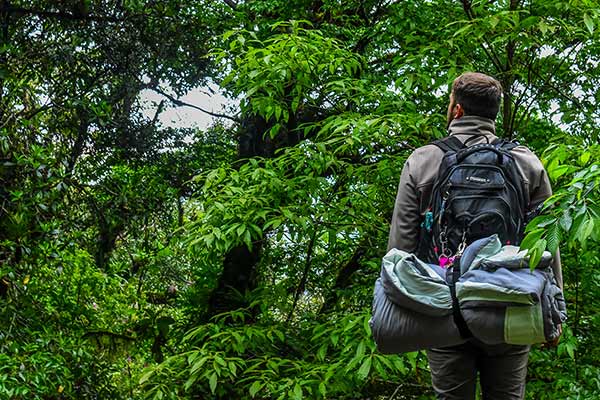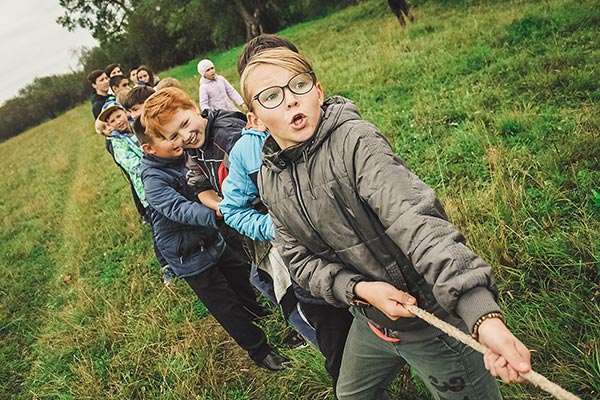How Outdoor Education Can Improve Your Student’s Success
How Outdoor Education Can Improve Your Student’s Success in School: Lessons from Sage’s Seasoned Outdoor Instructor

There is something magical about unplugging children from their material lives and taking them outdoors; and yet, now more than ever, children are spending less time outside. Richard Louv, a child advocacy expert, coined the term “nature deficit disorder” to describe behavioral disorders in our youth (such as reduced attention span) that result from a lack of exposure to nature. Kids just don’t spend unscheduled time outside to explore anymore and it’s beginning to have negative impacts.
The great outdoors creates a natural landscape for building confidence, leadership skills, community, and physical and mental health. Outdoor education is not just about showing people this landscape; it’s about introducing people to the best version of themselves through experiential learning. In this landscape, learning is viewed as a process: it becomes personal. After working in the field of outdoor education for the past four years, I have seen how students can be positively impacted and return home stronger, happier, and more confident. Here are some of the most important lessons that the outdoor classroom can teach our kids.
Everyone is a Leader
Today, most outdoor programs incorporate leadership into the curriculum. Most often this is facilitated through having “Leaders of the Day,” where students are paired with another student, given the autonomy to make decisions, and care for the group. Giving students the opportunity to lead builds interpersonal skills and confidence and teaches them a great deal about who they are. In the outdoors, the belief is not that there is one type of leader or one way to lead–but rather there are many. Leading while in nature is highly complex and dependent on many different factors. Outdoor courses span for long periods of time, social groups become extremely close and the unpredictability of weather and trail can lead to constant variation. All minds and all types of leadership styles are required for solving problems when they occur out in the woods. No longer is the outgoing and charismatic student considered the “natural born leader.” Everyone has the ability to be a leader; they just have to find it.
It’s Okay to Fail (and you Can Still Succeed)
One of the best things students learn from the outdoors is how to fail. In the academic world, failure is shunned: bad grades label students as unintelligent or lazy and the school year doesn’t stop for any reason. However, as outdoor leaders, we encourage failure, as it creates teachable moments.
Learning to fail and persevere teaches students that they are capable, and that not every outcome is permanent or a reflection of who they are.
The perfect trip rarely occurs in the outdoors, especially when students are given control. Almost always there are broken tent poles, impassable back roads, blisters, pouring down rain or burnt dinner. No one ever remembers the perfect trip. Instead, they remember how they were able to overcome minor fails with ingenuity, teamwork, and ultimately, success. Learning to fail teaches students that they are capable, and that not every outcome is permanent or a reflection of who they are. The process is the reward: extra granola to earn, lean-to tarps to build, and afternoons huddled up in tents telling stories.
Happiness is Attainable
There is no question that getting outside is challenging, both emotionally and physically. If children haven’t been exposed that often to the outdoors, they might not have any positive associations with nature and therefore can be disinterested in going outside. Children are also really busy these days. Between extracurriculars, school, homework and family time, there is little time for structured play outside. Exposing children to nature can also produce anxiety for parents. There are endless safety concerns, such as strangers, allergens and potential injuries. Yet these barriers can and need to be overcome, as the benefits of nature by far outweigh the costs. According to Louv, “An indoor childhood does reduce some dangers to children; but other risks are heightened, including risks to physical and psychological health, risk to children’s concept and perception of community, risk to self-confidence and the ability to discern true danger.”
Being outside makes people happier. Research has shown that exposure to nature, or green spaces, has a strong positive correlation with mood and self esteem. In fact, the subject of ‘contact with nature’ is now prevalent in many public and mental health studies. Neurologists have found that the prefrontal cortex of our brain, which is our brain’s control center, reduces its activity when people are exposed to nature. This lowered activity rates give our brains an opportunity to rest and rejuvenate, which in turn increases our level of happiness and decreases stress.
You Have a Mind of your Own
In the outdoors, students have the opportunity to make decisions and choices. Students on trips have told me that it was the first time they had been allowed to think for themselves. They are able to choose what hike to attempt, when to eat, and they don’t have to raise their hand every time they go to the bathroom. As outdoor instructors, our biggest goal is to become facilitators that allow students to do the problem solving on their own. They get to read the trail map and set up camp or create a language lesson for locals. Such skills translate directly into responsibility. When students have a choice, they care more.
Teamwork Makes the Dream Work

Learning how to work in a team is crucial for success in life—and there is no greater community building that exists than in the outdoors. Outdoor education focuses on interpersonal relationships through experiential learning and programmed initiatives. Outdoor instructors plan and create activities that force students to break the touch barrier, learn to listen, and build trust. On an outdoor adventure trip, everyone has a role and a purpose in the community. It takes the whole team to get packed, find camp, make food and organize activities. Outside, there is more on the line and even the most resistant student must learn to work in a team.
As outdoor instructors, our job is not to just teach students these lessons on the trip, but to influence students to bring home the skills they learn.
Confident, thoughtful, happy students who know how to work in a team make for better scholars in the classroom.
Eliza’s advice? Get your kids outside. Children don’t have to go on an expedition to get exposure to nature. Not everyone can send their children off to NOLS or go out camping every weekend, but we all have access to public parks, local beaches and trees that line sidewalks. For a child, a grassy backyard can be just as magical to explore as Sierra Nevada Mountains. Treat your children to a dose of nature and you will find that your child will return to school more focused, determined and representing the best version of themselves.
Parents and students alike may always be working toward finding the balance between the nature and nurture of the outdoors and indoor learning. This is one of the many reasons why our tutors and students participate in monthly outdoor service events! Whether after school, late night, on a Saturday service day or a Sunday tutoring session, we strive to offer a balance for all learning styles. Looking for enrichment this summer?
Explore summer workshops and enrichment courses here!

